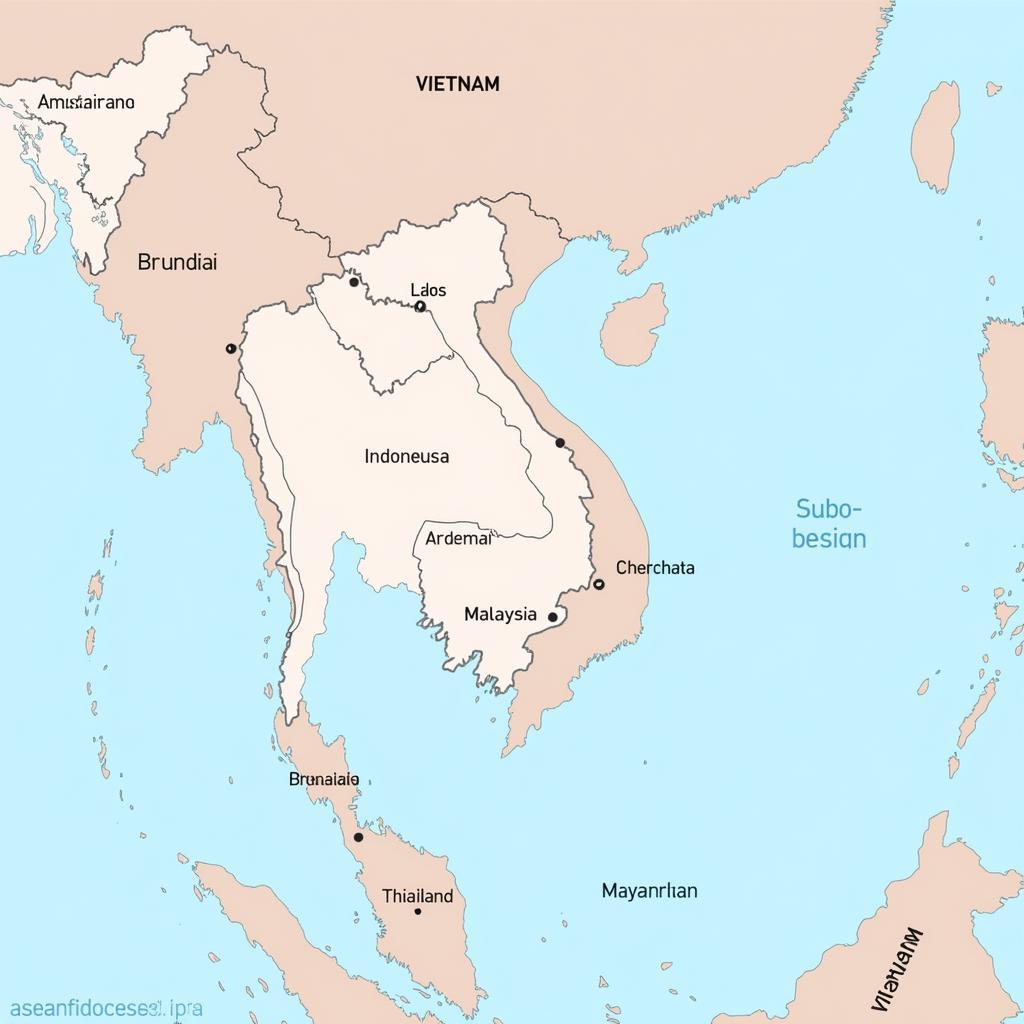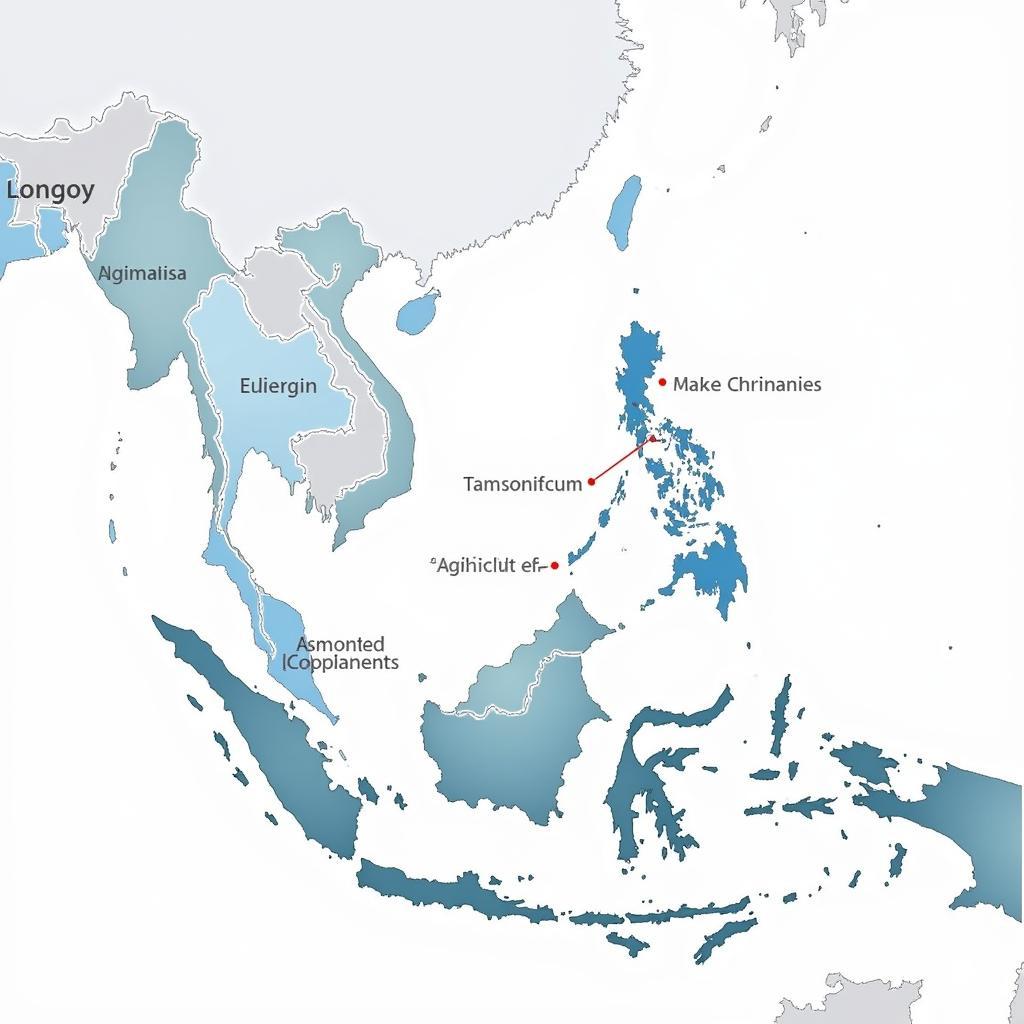The ASEAN Group, officially the Association of Southeast Asian Nations, is a vital intergovernmental organization playing a crucial role in the political, economic, and socio-cultural landscape of Southeast Asia. It fosters cooperation and facilitates integration among its ten member states, promoting peace, stability, and prosperity in the region.
Delving into the ASEAN Group’s Formation and Purpose
The ASEAN Group was established on August 8, 1967, with the signing of the Bangkok Declaration by five founding members: Indonesia, Malaysia, the Philippines, Singapore, and Thailand. Driven by a shared desire to promote regional stability and cooperation, these nations laid the foundation for what would become a dynamic and influential organization. The primary objectives of the ASEAN Group are to accelerate economic growth, social progress, and cultural development, promote regional peace and stability, and provide a platform for member states to address common challenges.
Expanding Membership and Influence of the ASEAN Group
Over the years, the ASEAN Group has expanded its membership to include Brunei Darussalam, Vietnam, Laos, Myanmar, and Cambodia. This expansion reflects the growing recognition of the organization’s importance in fostering regional cooperation and integration. The ASEAN Group’s influence extends beyond its member states, engaging with dialogue partners and international organizations on a wide range of issues, from trade and investment to security and environmental protection.
 ASEAN Group Member States Map
ASEAN Group Member States Map
ASEAN Group’s Economic Impact
The ASEAN Group has played a significant role in promoting economic integration within the region. Through initiatives like the ASEAN Free Trade Area (AFTA) and the ASEAN Economic Community (AEC), the organization has lowered trade barriers, facilitated cross-border investment, and created a more integrated regional market. This has led to increased trade and investment flows, boosting economic growth and development within the member states. The ASEAN Group’s economic dynamism has attracted the attention of global investors, making it a key player in the global economy.
The ASEAN Free Trade Area (AFTA) and its Benefits
AFTA, established in 1992, aims to eliminate tariffs and non-tariff barriers among ASEAN member states, creating a single market and production base. This has resulted in lower prices for consumers, greater market access for businesses, and increased trade within the region. AFTA has played a vital role in promoting economic growth and integration within the ASEAN Group.
Socio-Cultural Cooperation within the ASEAN Group
Beyond economic cooperation, the ASEAN Group also promotes socio-cultural collaboration among its member states. This includes initiatives in education, health, culture, and sports, fostering people-to-people connections and strengthening regional identity. The ASEAN Group recognizes the importance of cultural exchange and understanding in building a strong and cohesive community.
Promoting Cultural Exchange and Understanding
The ASEAN Group organizes various cultural events and programs, showcasing the rich diversity of the region’s cultures and traditions. These initiatives aim to promote intercultural dialogue and understanding, fostering a sense of shared identity and belonging among the people of ASEAN.
Conclusion
The ASEAN Group stands as a testament to the power of regional cooperation. From its humble beginnings, it has evolved into a dynamic and influential organization, shaping the political, economic, and socio-cultural landscape of Southeast Asia. The ASEAN Group’s continued commitment to integration and cooperation promises a brighter future for the region.
FAQ
-
What does ASEAN stand for?
- ASEAN stands for the Association of Southeast Asian Nations.
-
How many countries are in ASEAN?
- There are ten member states in ASEAN.
-
What is the purpose of ASEAN?
- ASEAN aims to promote regional peace, stability, and prosperity through cooperation and integration.
-
When was ASEAN established?
- ASEAN was established on August 8, 1967.
-
What are some of ASEAN’s key achievements?
- Key achievements include the establishment of AFTA and the AEC, promoting regional economic integration.
-
How does ASEAN benefit its member states?
- ASEAN provides a platform for member states to address common challenges, promote economic growth, and enhance regional security.
-
How can I learn more about ASEAN?
- You can visit the official ASEAN website and other reputable sources for more information.
Related Questions
- What are the challenges facing ASEAN?
- What is the future of ASEAN?
- How does ASEAN cooperate with other international organizations?
Need further assistance? Contact us at Phone Number: 0369020373, Email: aseanmediadirectory@gmail.com or visit us at: Thôn Ngọc Liễn, Hiệp Hòa, Bắc Giang, Việt Nam. We have a 24/7 customer service team.
